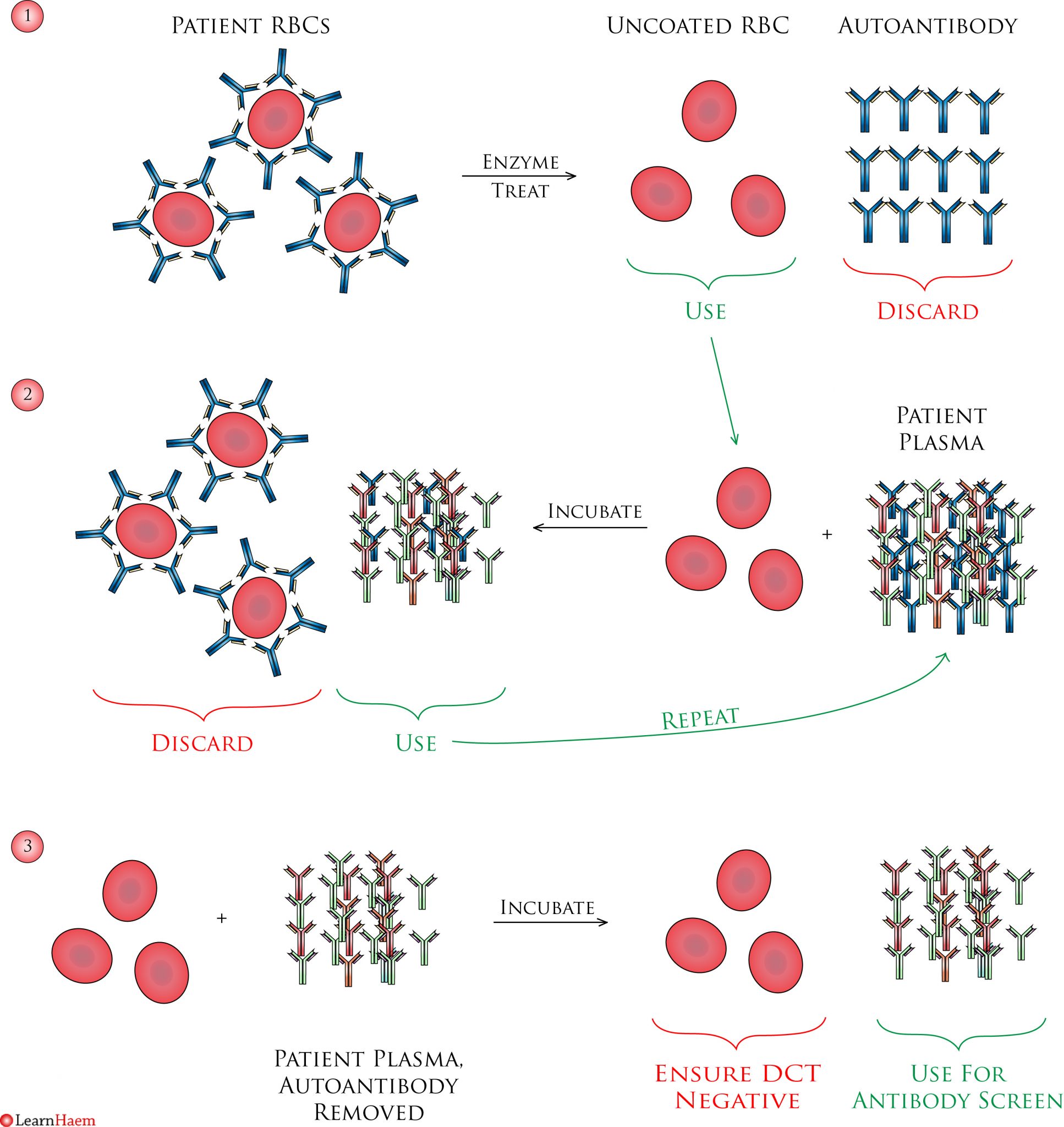- Autpadsorption is a strategy used to exclude clinically-significant red cell alloantibodies in the presence of a warm-reacting autoantibody.
- It requires the use of a patient’s red cells to remove the autoantibody from the patient’s plasma (see image below).
- Autoadsorption uses ZZAP, which is a combination of dithiothreitol (DTT) and papain – this will destroy Kell, Duffy and MNS antigens.

In order to identify any alloantibodies, a process known as auto-adsorption needs to be carried out. The premise of this test is that alloantibodies will not react with the patient’s own cells (individuals can only make alloantibodies to an antigen that they do not have).
This test cannot be done if the patient has been recently transfused (usually within the last 120 days, which is the lifespan of a normal RBC), as there will be donor red cells in the circulation, which could adsorb any alloantibodies.
The patient’s RBCs are treated to remove any bound autoantibody. They are then incubated with the patient’s plasma, which results in the autoantibody binding to the patient’s red cells. This process is repeated until all the autoantibody from the plasma is adsorbed out, leaving behind only alloantibodies to be identified.
A DCT should be done on the patient’s red cells after the final adsorption – it must be negative to ensure all the autoantibody has been adsorbed out of the plasma.
Because of the serial dilutions required to carry out this test, it is possible that weak alloantibodies may be missed using this technique.


Hi.
I m interested in doing this course. Please guide how can i? Is it free?
Thanks
Yes it’s free. Just click through the pages! Apologies for the delay in adding new content, we are trying to do so slowly and steadily!
This is an excellent website. many thanks
This is an excellent website. many thanks
Great website! Very useful in helping me prepare for my transfusion interview.
Excellent website..thanks a lot..